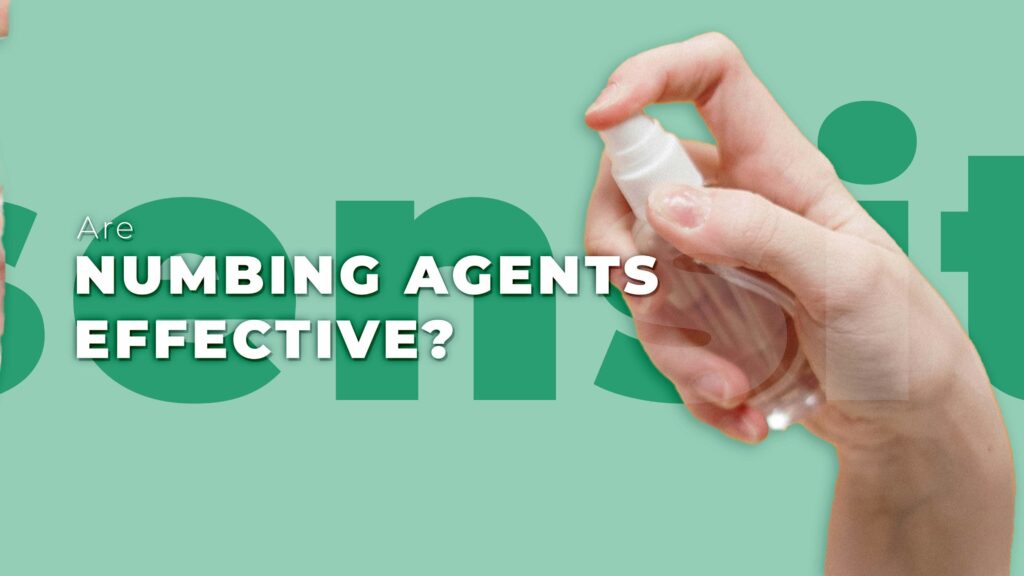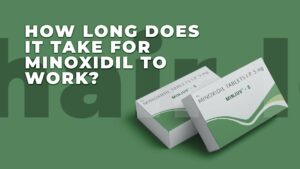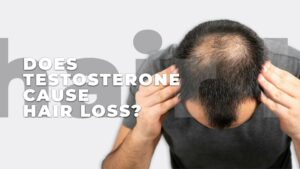Premature ejaculation can be embarrassing and frustrating. Yet, using a sexual numbing cream might just be the secret weapon you need! Numbing agents, such as creams and sprays, work by reducing sensitivity in the penis to help men last longer during sex. But how long does the numbing spray last, and is it safe to use? In this blog post, we’ll explore the potential of penis-numbing cream as a viable treatment for PE. We will also learn things you need to know before trying it.
What is Premature Ejaculation?

The physiology of ejaculation consists of three phases:
- emission
- expulsion
- orgasm
with each phase having its own neural circuitry.
PE is a common sexual condition that affects many men at some point in their lives. It refers to the inability to control or delay ejaculation. Hence leading to a shorter duration of sexual intercourse than desired.(1) There is no strict definition for how long intercourse should last. On average, men tend to ejaculate within five minutes of penetration.
Premature ejaculation can cause significant distress and frustration for both partners involved. It can impact sexual satisfaction, relationship dynamics, and even self-esteem. The exact causes of premature ejaculation are not fully understood. Both psychological and biological factors can contribute to it.
A 2011 review by researchers found that men with PE often suffer from significant psychological distress, including
- anxiety
- depression
- lack of sexual confidence
- poor self-esteem
- impaired quality of life
- sexual dissatisfaction
- interpersonal difficulties(2).
However, occasional episodes of premature ejaculation are normal and may not require treatment. Yet, if the condition persists and becomes a recurring problem, seeking treatment options may help.
In the next section, we will explore the potential of penis numbing cream as a treatment for PE. We will also examine its effectiveness, safety, and other considerations. Stay tuned to learn more about this intriguing solution!
What are Numbing Agents?
Numbing sprays, creams, and all the other topical forms of these agents are local anesthetics like Lidocaine and Prilocaine. Both Lidocaine and Prilocaine are local anesthetics of the amino amide type, which works on the principle of depressing neuronal signals by prolonging the inactivation of the fast voltage-gated Na+ channels in the membrane. In simple words, they work by reducing the sensation and prolonging the penis hence increasing the ejaculation time.
What is Sexual Numbing Cream?
The cream is a topical product that contains anesthetic ingredients. It is designed to reduce sensitivity in the penis. Before sex, apply the cream to the penis skin to numb it. This temporary decrease in sensitivity can help men delay ejaculation and last longer.
The anesthetic ingredients in the numbing product enter the skin to make it numb. These ingredients work by blocking the transmission of nerve signals. Hence reducing the sensations felt during sexual activity.
Penis numbing cream is available in various forms. These include creams, gels, sprays, and wipes. Some products may contain ingredients such as moisturizers or vitamins to improve the health of the skin.
Penis numbing cream is not a permanent solution for premature ejaculation. It is intended for temporary use and should be applied in moderation. Excessive use or incorrect application can lead to unwanted side effects. Overuse of numbing cream may cause reduced pleasure or numbness in the partner.
In the following sections, we will delve deeper into how sexual numbing cream works. We will explore the different types of products available. Further, we’ll discuss the potential pros and cons of using this treatment for PE. Stay tuned to learn more!
How does Sexual Numbing Cream work?
The cream works by reducing sensitivity in the penis. Hence allowing men to last longer during sexual activity and helping to treat PE. The cream contains anesthetic ingredients. Skin absorbs these ingredients and blocks the transmission of nerve signals. Thus numbing the sensations felt during intercourse.
When you apply the cream to the penis before sex, it starts working in a few minutes. The anesthetic ingredients penetrate the skin and target the nerve endings. They gradually reduce the sensitivity of the penis. This numbing effect can help delay ejaculation. It further increases control over orgasm, allowing for longer-lasting sexual experiences.
Moreover, penis numbing cream is a temporary solution for premature ejaculation. The numbing effect typically lasts for a limited period. It is crucial to follow the instructions provided with the cream. Apply it in moderation to avoid potential side effects, such as reduced pleasure or numbness in both the user and their partner.
While penis numbing cream can be a potential option for those struggling with premature ejaculation, it is important to consider individual needs, preferences, and any underlying medical conditions before deciding to try it. Consulting with a doctor can provide valuable guidance and ensure the safe and appropriate use of penis numbing cream as a treatment option.
Are Numbing Agents Effective?

A systematic review found topical anesthetics to be more effective than placebo, paroxetine, and sildenafil at delaying ejaculation(16). Moreover, a double-blind, placebo-controlled clinical trial also found numbing agents to be an effective treatment for premature ejaculation(17).
Do Numbing Agents Pose Any Risk?
Since being local in their application, they do not pose any systemic risk to the body, minor side effects such as local burning sensations, genital erythema, and penile numbness, which may lead, in turn to a loss of the erection, might occur(18). People with cardiac arrhythmias should avoid using it and stick to alternatives.
Do Numbing Agents Pose Any Risk to the Partner?
Some anesthetics, such as benzocaine, have poor penetration potential and thus can be transferred to the partner’s genital tract. When using products with benzocaine, a condom can be used to minimize the risk of the transfer of the agent. Lignocaine, on the contrary, has higher penetration potential and thus poses a reduced risk to the partner. Lidocaine and benzocaine can be absorbed through the skin, leading to toxicity when it enters the bloodstream and affects other organs. Toxicity from lidocaine affects the brain and heart, causing symptoms such as tremors, dizziness, and abnormal heart rhythms. When high levels of lidocaine are present in the bloodstream, it can lead to low blood pressure, seizures, and even death.
How Long do Numbing Agents Last?
Sexual Numbing creams have been shown to increase the duration of sex by eightfold (19). Though once absorbed, the numbing sensation can last for three hours, since the cream and sprays cannot penetrate keratinized skin, they can be wiped off from the shaft of the penis.
What is the Ideal Time to Apply?

Since they desensitize the penile tissue, the long duration of application can actually hinder an erection. A study found 20 min of application time before sexual contact as the optimum period(20). They can also be applied over a flaccid penis.
Which Numbing Agent should be used?
Since the agents are typically applied, they are usually available in the form of a cream or spray. Climax Spray is one the most commonly available and sought-after numbing agents in the market since it employs only lignocaine as the active ingredient. This reduces the chances of adverse reactions and transfer of the agent to the partner. It also creates less mess as it can be sprayed directly upon the penile tissue and does not require to be manually applied.
The Pros and Cons of Using Sexual Numbing Cream for Premature Ejaculation
When considering the use of penis numbing cream for premature ejaculation, it’s important to weigh the potential pros and cons.
Pros
1. Increased duration:
Penis numbing cream can help men last longer during sexual activity by reducing sensitivity. This can lead to increased sexual satisfaction for both partners.
2. Improved control:
By reducing sensitivity, numbing cream can help men gain better control over their orgasms, allowing them to delay ejaculation and prolong sexual encounters.
3. Easy to use:
Penis numbing cream is generally simple to apply and can be discreetly used before sexual activity. It’s a convenient option for those who prefer a topical solution.
Cons
1. Reduced pleasure:
Numbing creams can decrease sensation not only for the user but also for their partner. This reduction in sensitivity may lead to a less pleasurable experience for both individuals involved.
2. Potential side effects:
Some individuals may experience unwanted side effects, such as numbness, tingling, or a burning sensation. It’s essential to follow the instructions carefully and use the cream in moderation to avoid these potential issues.
3. Temporary solution:
Numbing cream is not a permanent fix for premature ejaculation. It provides a temporary solution and needs to be reapplied before each sexual encounter.
Prevalence of Premature Ejaculation
Estimating a precise percentage or putting a number on the bulk of people affected is neither a feasible nor a tenable task as premature ejaculation remains an involuted issue with its complexities. Since most studies depend on self-reporting, quantifying the number of affected remains a challenge. Despite the roadblocks, there has been considerable epidemiological research on it.
An LCA(Latent Class analysis) study found approximately 31% of the subjects were affected by one or the sexual disorder(4).
Distribution
| Disorder | Prevalence |
| Premature Ejaculation | 21% |
| Erectile dysfunction | 5% |
| Low Sexual Desire | 5% |
The Division of Urology, Duke University Medical Center, USA, has proposed that biological mechanisms associated with neurotransmitters such as norepinephrine, serotonin, oxytocin, Gamma-amino-butyric acid, and nitric oxide (NO), as well as the hormone estrogen, play central roles in ejaculation, and subsequently may mediate PE(6).
Another study estimated its prevalence to be upwards of 30% among the general population, with factors such as poor metabolic control, low sexual exposure, and emotional distress as main etiological factors(7). Sexual performance anxiety, psychological or relationship problems, erectile dysfunction (ED), prostatitis, and hyperthyroidism have also been linked to premature ejaculation(8).
Being a multifactorial and involuted issue with psychological and physiological components, the approach towards it should be nuanced and encompass human temperament as well.
However, on the contrary, the societal and self-imposed roadblocks regarding sexual problems and their redressal often sideline and postpone the adequate medical treatment required, leading to distress and mild neurosis(5).
Other Treatments for Premature Ejaculation
There are currently no FDA-approved drugs to treat or manage premature ejaculation. The following are some clinically proven methods to combat or delay ejaculation.
Kegel Exercises
Studies have shown that Pelvic floor muscle exercises (PFMEs), especially targeting Ischiocavernosus and Bulbocavernosus muscles, might help PE and other issues such as urinary incontinence(9). Research has proposed pelvic floor muscle rehabilitation as a new, viable therapeutic option for treating premature ejaculation(10).
Lifestyle changes
A 2017 randomized controlled trial showed that moderate physical activity longer than 30 min at least 5 times a week led to a delay in ejaculation and appeared as an alternative to pharmacological intervention(11).
Psychosexual Counseling
Behavioral therapy has consistently shown promising results in managing premature ejaculation. A 4-week trial found combining sexual behavioral therapies with pharmaceuticals to be more effective than drugs alone in treating patients with lifelong Premature ejaculation(12). A review also found a combination of pharmaco- and psychotherapy as the most promising intervention for lifelong and acquired PE(13).
Acupuncture
Though it is a frowned-upon method in the medical fraternity due to compromised needles and unsafe practices in most establishments, it has also shown potential in managing premature ejaculation(14).
Medication
SSRIs are currently regarded as the first-line pharmaceuticals in managing premature ejaculation. Though SSRIs are usually prescribed for neurotic disorders like anxiety, PTSD, and depression, their off-label use for treating PE is well-reported. Dapoxetine is a specially designed SSRI for treating premature ejaculation. It has been found suitable for PE due to its effectiveness and lack of adverse effects(15).
Numbing Agents
Even though SSRIs pose no major health risk yet due to the systemic distribution of the drug often leads to some unwanted side effects such as anxiety, yawning, and loss of appetite. Thus local anesthetic/numbing agents can provide a much safer and more appropriate alternative. We will discuss them in detail in the next segment.
The Final Thought
Premature ejaculation is a common sexual issue, often not discussed due to its personal nature. Factors like metabolic disorders (like diabetes) and psychological issues (like anxiety and stress) are linked to it.
There are no FDA-approved drugs for premature ejaculation, so most solutions come from clinical trials and reviews. Lifestyle changes and regular exercise can help prevent and treat it. Kegel exercises, which strengthen the pelvic floor, can benefit various sexual dysfunctions. Psychosexual counseling, alongside medication, shows promise in treating premature ejaculation.
Although SSRIs delay ejaculation, they can have systemic side effects. In contrast, numbing agents like climax spray offer a safe alternative, with limited side effects and solid evidence for treating premature ejaculation. They are a safer option than SSRIs like Dapoxetine.
References
- Edition, Fifth. “Diagnostic and statistical manual of mental disorders.” Am Psychiatric Assoc 21.21 (2013): 591-643. https://scholar.google.com/scholar?q=American+Psychiatric+Association.+Diagnostic+and+statistical+manual+of+mental+disorders:+DSM-5%E2%84%A2.+5th+ed.+Arlington,+VA:+American+Psychiatric+Publishing,+2013.+
- World Health Organization. (2019). International statistical classification of diseases and related health problems (11th ed.). https://icd.who.int/browse10/2016/en
- Rowland DL. Psychological impact of premature ejaculation and barriers to its recognition and treatment. Curr Med Res Opin. 2011 Aug;27(8):1509-18. doi: 10.1185/03007995.2011.590968. Epub 2011 Jun 13. PMID: 21663497. https://www.tandfonline.com/doi/abs/10.1185/03007995.2011.590968?journalCode=icmo20
- Laumann EO, Paik A, Rosen RC. Sexual Dysfunction in the United States: Prevalence and Predictors. JAMA. 1999;281(6):537–544. doi:10.1001/jama.281.6.537 https://jamanetwork.com/journals/jama/fullarticle/188762
- Rajkumar RP, Kumaran AK. Depression and anxiety in men with sexual dysfunction: a retrospective study. Compr Psychiatry. 2015 Jul;60:114-8. doi: 10.1016/j.comppsych.2015.03.001. Epub 2015 Mar 19. PMID: 25818906. https://www.sciencedirect.com/science/article/abs/pii/S0010440X15000346?via%3Dihub
- Donatucci CF. Etiology of ejaculation and pathophysiology of premature ejaculation. J Sex Med. 2006 Sep;3 Suppl 4:303-8. doi: 10.1111/j.1743-6109.2006.00305.x. PMID: 16939474. https://linkinghub.elsevier.com/retrieve/pii/S1743609515314600
- Carson C, Gunn K. Premature ejaculation: definition and prevalence. Int J Impot Res. 2006 Sep-Oct;18 Suppl 1:S5-13. doi: 10.1038/sj.ijir.3901507. PMID: 16953247. https://www.nature.com/articles/3901507
- McMahon CG, Jannini EA, Serefoglu EC, Hellstrom WJ. The pathophysiology of acquired premature ejaculation. Transl Androl Urol. 2016 Aug;5(4):434-49. doi: 10.21037/tau.2016.07.06. PMID: 27652216; PMCID: PMC5001985. https://tau.amegroups.com/article/view/11133/11766
- Dorey G. Conservative treatment of erectile dysfunction. 3: Literature review. Br J Nurs. 2000 Jul 13-26;9(13):859-63. doi: 10.12968/bjon.2000.9.13.5514. PMID: 11261059. https://www.magonlinelibrary.com/doi/abs/10.12968/bjon.2000.9.13.5514
- Pastore AL, Palleschi G, Fuschi A, Maggioni C, Rago R, Zucchi A, Costantini E, Carbone A. Pelvic floor muscle rehabilitation for patients with lifelong premature ejaculation: a novel therapeutic approach. Ther Adv Urol. 2014 Jun;6(3):83-8. doi: 10.1177/1756287214523329. PMID: 24883105; PMCID: PMC4003840. https://journals.sagepub.com/doi/10.1177/1756287214523329
- Kilinc MF, Aydogmus Y, Yildiz Y, Doluoglu OG. Impact of physical activity on patient self-reported outcomes of lifelong premature ejaculation patients: Results of a prospective, randomised, sham-controlled trial. Andrologia. 2018 Feb;50(1). doi: 10.1111/and.12799. Epub 2017 Mar 6. PMID: 28261848. https://onlinelibrary.wiley.com/doi/10.1111/and.12799
- Cormio L, Massenio P, La Rocca R, Verze P, Mirone V, Carrieri G. The Combination of Dapoxetine and Behavioral Treatment Provides Better Results than Dapoxetine Alone in the Management of Patients with Lifelong Premature Ejaculation. J Sex Med. 2015 Jul;12(7):1609-15. doi: 10.1111/jsm.12925. Epub 2015 Jun 16. PMID: 26077706. https://academic.oup.com/jsm/article/12/7/1609/6966747?login=false
- Althof SE. Psychosexual therapy for premature ejaculation. Transl Androl Urol. 2016 Aug;5(4):475-81. doi: 10.21037/tau.2016.05.15. PMID: 27652220; PMCID: PMC5001981. https://tau.amegroups.com/article/view/10700/11769
- Sahin S, Bicer M, Yenice MG, Seker KG, Yavuzsan AH, Tugcu V. A Prospective Randomized Controlled Study to Compare Acupuncture and Dapoxetine for the Treatment of Premature Ejaculation. Urol Int. 2016;97(1):104-11. doi: 10.1159/000445253. Epub 2016 Apr 7. PMID: 27049323. https://www.karger.com/Article/Abstract/445253
- Owen RT. Dapoxetine: a novel treatment for premature ejaculation. Drugs Today (Barc). 2009 Sep;45(9):669-78. PMID: 19956808. https://pubmed.ncbi.nlm.nih.gov/19956808/
- Martyn-St James M, Cooper K, Ren K, Kaltenthaler E, Dickinson K, Cantrell A, Wylie K, Frodsham L, Hood C. Topical anaesthetics for premature ejaculation: a systematic review and meta-analysis. Sex Health. 2016 Apr;13(2):114-23. doi: 10.1071/SH15042. PMID: 26599522. https://www.publish.csiro.au/sh/SH15042
- Busato W, Galindo CC. Topical anaesthetic use for treating premature ejaculation: a double-blind, randomized, placebo-controlled study. BJU Int. 2004 May;93(7):1018-21. doi: 10.1111/j.1464-410X.2003.04773.x. PMID: 15142155. https://bjui-journals.onlinelibrary.wiley.com/doi/10.1111/j.1464-410X.2003.04773.x
- Xia JD, Han YF, Zhou LH, Chen Y, Dai YT. Efficacy and safety of local anaesthetics for premature ejaculation: a systematic review and meta-analysis. Asian J Androl. 2013 Jul;15(4):497-502. doi: 10.1038/aja.2012.174. Epub 2013 May 27. PMID: 23708465; PMCID: PMC3739226. http://www.asiaandro.com/Abstract.asp?doi=10.1038/aja.2012.174
- Choi HK, Jung GW, Moon KH, Xin ZC, Choi YD, Lee WH, Rha KH, Choi YJ, Kim DK. Clinical study of SS-cream in patients with lifelong premature ejaculation. Urology. 2000 Feb;55(2):257-61. doi: 10.1016/s0090-4295(99)00415-x. PMID: 10688090. https://linkinghub.elsevier.com/retrieve/pii/S009042959900415X
- Atikeler MK, Gecit I, Senol FA. Optimum usage of prilocaine-lidocaine cream in premature ejaculation. Andrologia. 2002 Dec;34(6):356-9. doi: 10.1046/j.1439-0272.2002.00511.x. PMID: 12472618. https://onlinelibrary.wiley.com/doi/abs/10.1046/j.1439-0272.2002.00511.x










Leave a reply